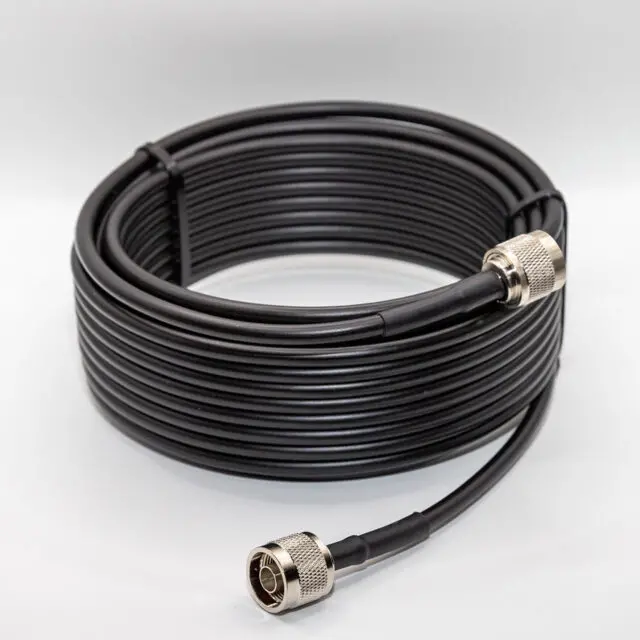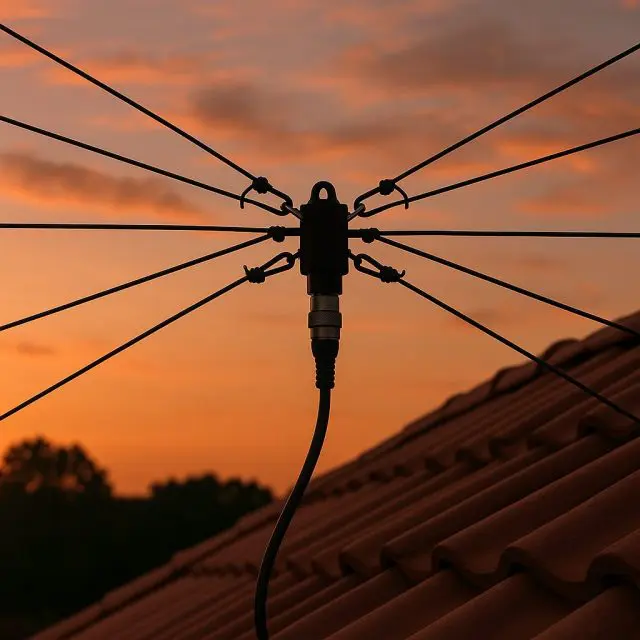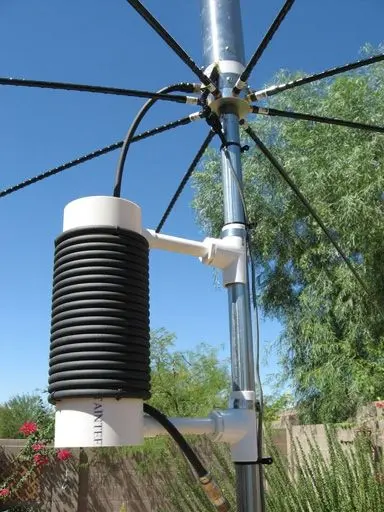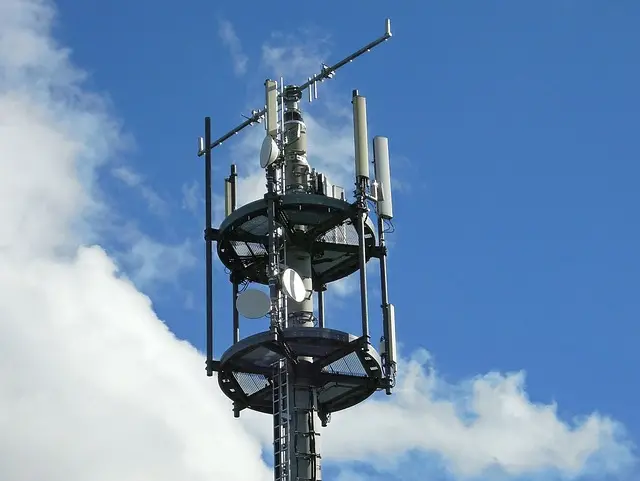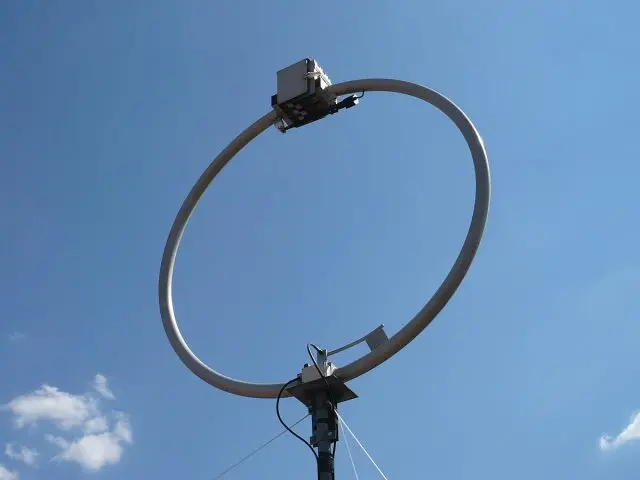This calculator helps you estimate coaxial cable loss at your chosen frequency and length. By entering frequency, cable type, and length (in meters or feet), you can see how many decibels are lost and what percentage of transmitter power actually reaches the antenna. If you also provide transmitter power in watts, the tool will calculate the output available at the antenna port. A comparison table shows typical loss values for popular cable types, making it easier to select the best coax for your installation.
Coaxial Cable Loss Calculator
No connector or antenna gain included. Values are typical; real-world results vary by manufacturer, temperature and installation.
Understanding Coaxial Cable Loss in Radio Systems
When building or optimizing any radio system—whether amateur radio, professional communications, Wi-Fi networks, or satellite ground stations—one of the most critical yet often overlooked aspects is coaxial cable loss. The coaxial cable serves as the essential link between the transmitter and the antenna. While it seems passive, every meter of coax introduces attenuation. That means part of your carefully generated RF power never reaches the antenna, reducing efficiency and limiting range.
What is coaxial cable loss?
Coaxial cable loss, often called attenuation, is the reduction of signal strength as the RF wave travels through the cable. It is typically expressed in decibels per 100 meters (dB/100m) or sometimes dB per 100 feet (dB/100ft). The higher the attenuation, the less efficient the feedline.
For example, at 144 MHz:
-
A 20-meter run of RG-58 may lose about 2.4 dB, meaning around 42% of your transmitter power is wasted as heat.
-
The same run with LMR-400 may lose only 0.8 dB, preserving almost 83% of your power.
Why does loss increase with frequency?
Coaxial cable loss is not constant. The attenuation grows as frequency increases because of two primary factors:
-
Skin effect – At higher frequencies, current flows only on the surface of the conductor. This increases the effective resistance and therefore loss.
-
Dielectric losses – The insulating material between the center conductor and the shield absorbs energy, which increases with frequency.
This is why a cable that performs acceptably at HF bands (3–30 MHz) may be totally unsuitable at UHF (300–1000 MHz) or microwave frequencies.
Typical loss values for common coaxial cables
Here are approximate attenuation values at 100 MHz, 400 MHz, and 1000 MHz for popular coax types (values vary by manufacturer, temperature, and installation quality):
-
RG-58: 12.2 dB/100m @100 MHz, 30.8 dB/100m @400 MHz, 50.5 dB/100m @1000 MHz
-
RG-213: 5.8 dB/100m @100 MHz, 13.2 dB/100m @400 MHz, 22 dB/100m @1000 MHz
-
LMR-240: 4.7 dB/100m @100 MHz, 11.9 dB/100m @400 MHz, 20.5 dB/1000 MHz
-
LMR-400: 2.6 dB/100m @100 MHz, 6.7 dB/100m @400 MHz, 11.3 dB/1000 MHz
-
Ecoflex 10: 2.1 dB/100m @100 MHz, 5.4 dB/100m @400 MHz, 9.2 dB/1000 MHz
Impact on transmitter power
Loss in dB can be converted to a percentage of power delivered using the formula:
Power_out / Power_in = 10^(-Loss_dB / 10)
Examples:
-
Loss = 3 dB → only 50% of the original power reaches the antenna.
-
Loss = 1 dB → about 79% remains.
-
Loss = 0.5 dB → 89% remains.
If your transmitter outputs 50 W and your cable has 3 dB loss, only 25 W reaches the antenna.
Why coax loss matters for reception too
It’s easy to think about coax loss only in terms of transmit power. But the same attenuation applies to received signals. A weak signal from a distant station may be further reduced by several decibels in the feedline, dropping below the receiver’s noise floor.
Choosing the right coax for your application
-
Frequency band: Higher frequencies demand lower-loss coax.
-
Cable length: Long runs require low-loss coax.
-
Power level: High power increases heating in lossy cables.
-
Flexibility: Thicker cables are less flexible.
-
Budget: Premium cables cost more, but save performance and energy.
Common mistakes with coaxial cables
-
Using RG-58 at UHF.
-
Ignoring connector quality.
-
Running cables in tight bends.
-
Using indoor-rated cable outdoors.
How to reduce coaxial loss
-
Keep the cable short.
-
Choose low-loss coax for your frequency.
-
Use high-quality connectors.
-
Weatherproof outdoor connections.
-
Avoid kinks and sharp bends.
-
Consider moving the radio closer to the antenna.
The structure of a coaxial cable
Every coaxial cable has four parts: inner conductor, dielectric, shield, and jacket. Each influences loss and durability.
Materials
-
Solid copper conductors: lowest resistance.
-
Copper-clad steel: cheaper, but higher loss.
-
Foam dielectric: low loss, moisture-sensitive.
-
PTFE: high-performance, high-temperature.
Types of coaxial cables
Legacy cables
-
RG-58: flexible, high loss.
-
RG-174: thinner, short leads only.
-
RG-213: robust, heavy, better at HF/VHF.
Modern low-loss cables
-
LMR series (195, 240, 400, 600).
-
Ecoflex series (7, 10, 15).
-
Aircell 7.
Special cables
-
Hardline (Heliax).
-
Semi-rigid coax.
-
Plenum-rated coax.
Shielding and interference
Better shielding prevents ingress and egress.
-
Single braid: low coverage.
-
Double braid: better.
-
Foil + braid: best isolation.
Measuring coaxial loss
-
Manufacturer datasheets.
-
Vector Network Analyzer.
-
Power meter + dummy load.
-
Return loss / SWR methods.
Environmental factors affecting loss
-
Temperature: higher heat increases loss.
-
Moisture: foam absorbs water, increasing loss.
-
UV: sunlight degrades jackets.
-
Mechanical stress: bending damages dielectric.
Installation best practices
-
Shortest path.
-
No sharp bends.
-
Secure without crushing.
-
Weatherproof connectors.
-
Ground shields at entry points.
Coaxial cable vs alternatives
-
Twin-lead / open wire: very low loss at HF.
-
Waveguide: used at microwave.
-
RF over fiber: for very long runs.
Economic considerations
-
RG-58 is cheap but lossy.
-
LMR-400 is pricier but efficient.
-
Energy saved and signal gained justify investment.
Practical case studies
Amateur HF station
30 m of RG-213 acceptable at 14 MHz, but at 50 MHz loss doubles. Ecoflex 10 performs better.
VHF repeater
50 m of RG-58 wastes most of the power. LMR-400 reduces loss significantly.
Wi-Fi 5 GHz link
Even 10 m of RG-58 is unusable. Better to mount the radio at the antenna.
Future trends in coaxial technology
-
Low-loss dielectrics with moisture resistance.
-
UV-stable jackets.
-
5G and mmWave coax.
-
Hybrid coax + fiber designs.
FAQ
What’s the difference between RG-58 and LMR-400?
RG-58 is thin and cheap but very lossy. LMR-400 is thicker, low-loss, and suitable for high frequencies.
How much loss in 100 ft of RG-213 at 144 MHz?
About 1.7 dB.
What’s the best coax outdoors?
UV-resistant, low-loss types like LMR-400 or Ecoflex.
Does coax length affect SWR?
Yes, loss makes bad SWR look better.
How long can coax be?
It depends on acceptable loss. At HF, 50 m is fine. At UHF, even 10 m may be too much.
Coaxial cable loss is one of the most underestimated factors in radio system performance. Whether you are a ham operator chasing DX, a Wi-Fi installer, or a broadcaster maintaining tower systems, choosing the right feedline is as important as choosing the right antenna.
By understanding attenuation, comparing cable types, and applying best installation practices, you can maximize efficiency. And with tools like the coaxial loss calculator, you don’t have to guess—you can design with confidence.
At the end of the day, coax cables are like arteries in your radio system. If they are too thin or clogged with loss, your signal will suffer—no matter how strong your transmitter is. Investing in good cable may not be as exciting as buying a new rig or antenna, but it pays off every single time you press the PTT and your signal gets through.
Image(s) used in this article are either AI-generated or sourced from royalty-free platforms like Pixabay or Pexels.
Did you enjoy this article? Buy me a coffee!


